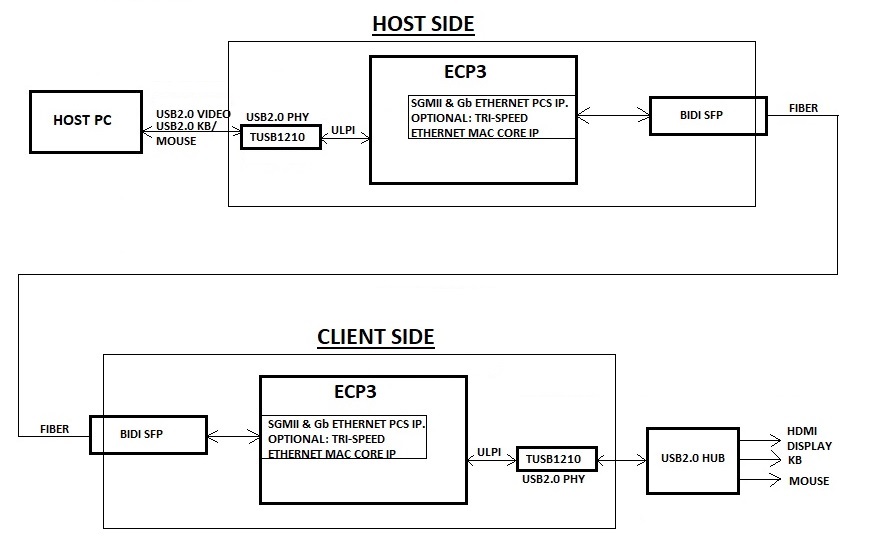Other Parts Discussed in Thread: TUSB212
We would like for the "Host side Lattice FPGA ECP3/fiber/Client side Lattice FPGA ECP3" to act as a transparent link (act as our USB2.0 cable) between the Host side PC USB Host and the Client side USB Hub.
Is the block diagram correct with the parts shown?
Does the TUSB1210 PHY depend on an OS driver to function? If so, then the Host side would be OK, but an issue on the lack of an OS driver on the Client side.
If an OS driver is required, how else can we implement this design?
If the TUSB1210 is the correct part to use, do you know of readily available ULPI IP for the Lattice FPGA ECP3?
Thank you, Roland


